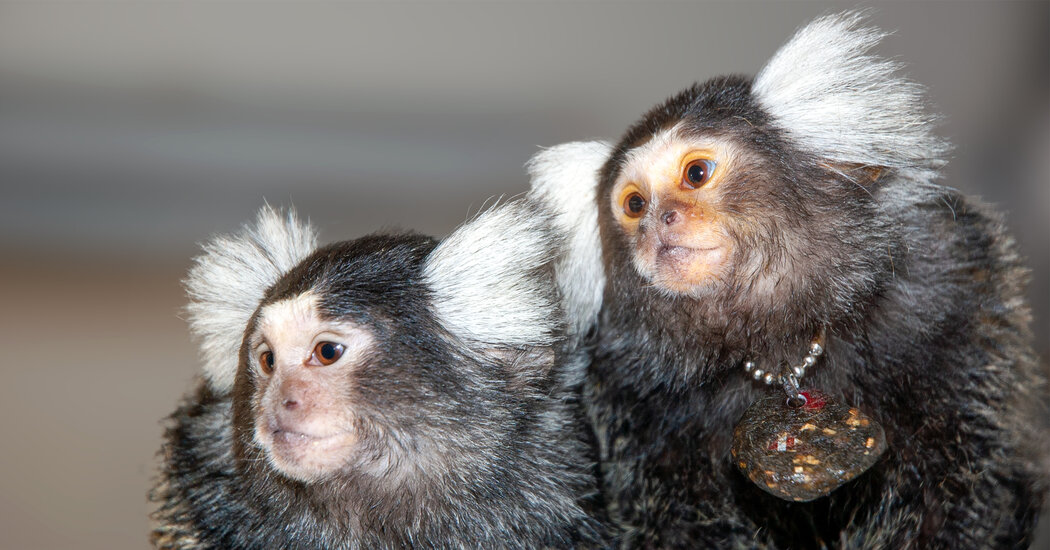Marmosets are the first nonhuman primates known to use name-like labels for individuals, a new study suggests.
The common marmoset is a certified chatterbox. The small, South American monkey uses an array of chirps, whistles and trills to defend its territory, flag the discovery of food, warn of impending danger and find family members hidden by dense forest foliage.
Marmosets also use distinct calls to address different individuals, in much the same way that people use names, new research suggests. The findings make them the first nonhuman primates known to use name-like vocal labels for individuals.
Until this year, only humans, dolphins and parrots were known to use names when communicating. In June, however, scientists reported that African elephants appeared to use names, too; researchers made the discovery by using artificial intelligence-powered software to detect subtle patterns in the elephants’ low-pitched rumbles.
In the new study, which was published in Science last month, a different team of researchers also used A.I. to uncover name-like labels hiding in the calls of common marmosets. The discovery, which is part of a burgeoning scientific effort to use sophisticated computational tools to decode animal communication, could help shed light on the origins of language. And it raises the possibility that name-bestowing behavior may be more widespread in the animal kingdom than scientists once assumed.
“I think what it’s telling us is that it’s likely that animals actually have names for each other a lot more than maybe we ever conceived,” said George Wittemyer, a conservation biologist at Colorado State University who led the recent elephant study but was not involved in the marmoset research. “We just never were really looking properly.”
Marmosets are highly social, forming long-term bonds with their mates and raising their offspring cooperatively in small family groups. They produce high-pitched, whistle-like “phee calls” to communicate with other marmosets who might be hidden among the treetops. “They start to exchange phee calls when they lose eyesight of each other,” said David Omer, a neuroscientist at the Hebrew University of Jerusalem who led the new study.
